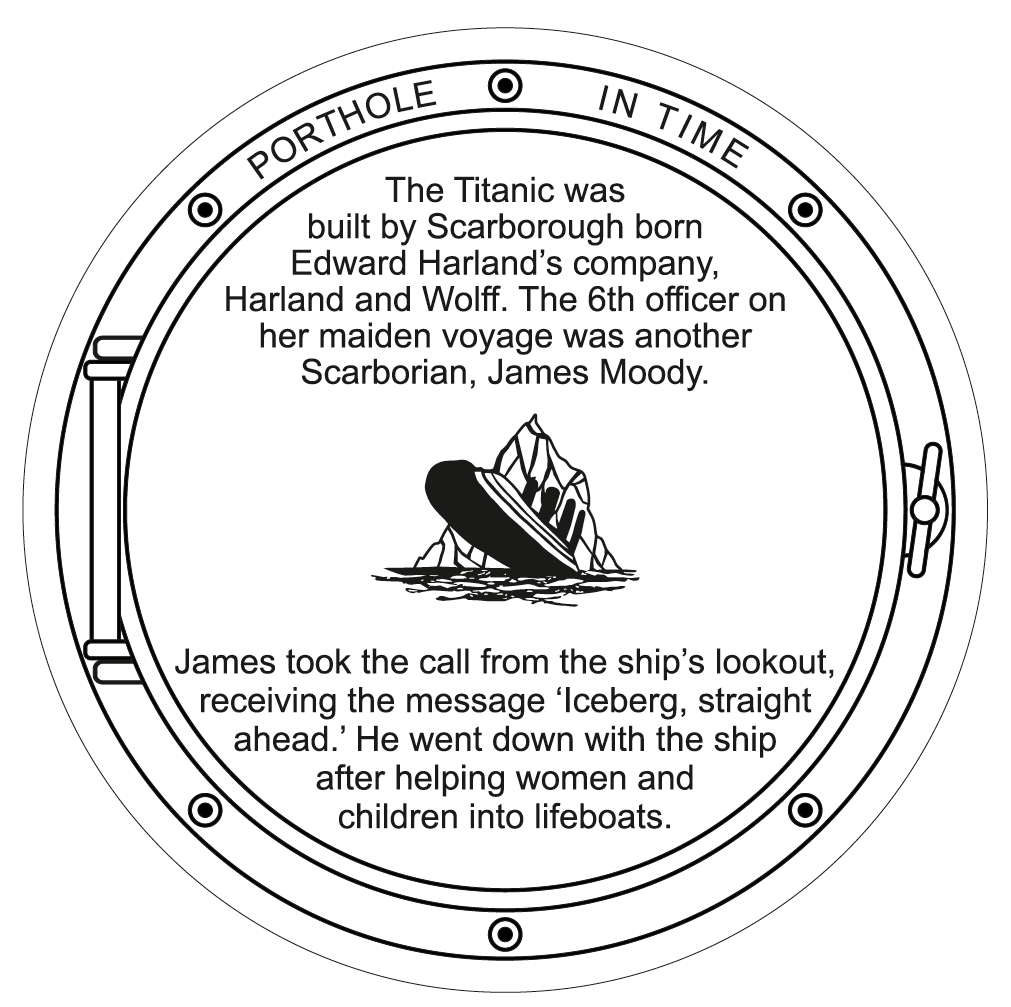
Scarborough has two important connections to the RMS Titanic – James Paul Moody, the only junior officer to die in the sinking of the Titanic, and Sir Edward Harland, founder of the shipyard which built the Titanic, were both from the town.
James Paul Moody was born in Scarborough’s South Cliff area in 1887. At 14, Moody left Scarborough to train to be a ship’s officer, spending 1902 and 1903 as a cadet on the HMS Conway, a training ship moored in the Mersey. From there Moody worked his way up through cargo ships in the Atlantic to joining the White Star Line in 1911. When White Star offered Moody the job of Sixth Officer on board the newly built Titanic, which then was the largest ship ever built, he was very pleased to accept. Moody wrote, amazed by the scale of the ship, ‘I cannot describe any part of a ship which needs 85 clocks and 16 pianos to furnish it!’
The Titanic set sail on her maiden voyage on April 10th 1912 from Southampton. On 14th April, lookout Frederick Fleet spotted a ‘black thing’, rang the warning bell and telephoned the bridge at 11.35 p.m. Moody answered – ‘What do you see?’ ‘Iceberg, right ahead,’ was the reply. Moody, the first of the bridge crew to be aware of the iceberg, thanked him and passed on the information to First Officer Murdoch. The ship struck the iceberg less than a minute later. Moody then loaded and launched the lifeboats and, according to one writer, ‘stayed with the ship to the end and was the means of saving many a life that would otherwise have been lost’. His body was never found.
Sir Edward Harland was born in 1831 in a house at 10 Newborough, today the site of Marks and Spencer. The son of a prominent local doctor and inventor, Dr William Harland, Edward developed a passion for engineering and at age 15 he moved to Newcastle as an apprentice to work for railway pioneer Robert Stephenson, a friend of his father’s. He then moved into shipbuilding in Glasgow, Newcastle, and finally Belfast in 1854. Harland became known for his strict discipline and attention to detail, which made a great success of the shipyard in Belfast he managed. He was able to purchase the shipyard himself in 1858. In 1861 he partnered with Gustav Wilhelm Wolff to form Harland & Wolff, developing a strong relationship with Thomas Ismay’s White Star Line, for which he built the fastest ships to cross the Atlantic.